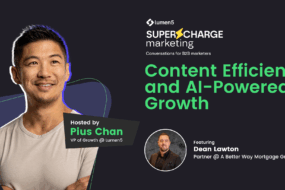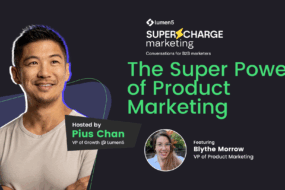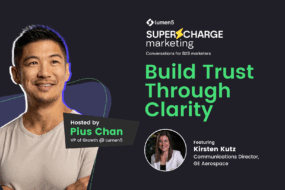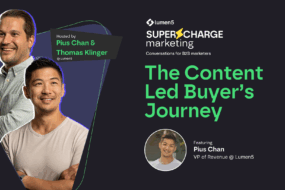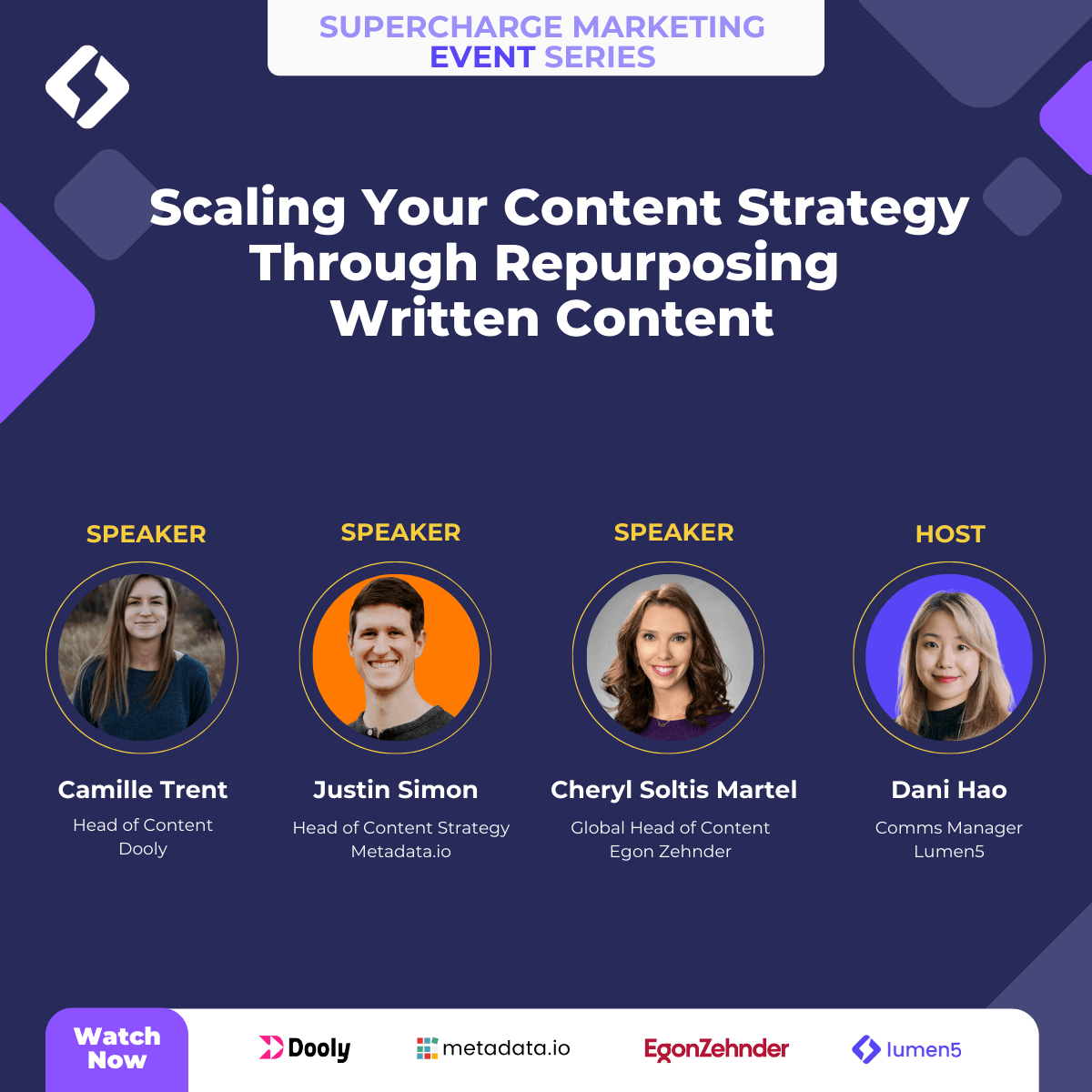
As the world of content marketing rapidly evolves, it’s essential to deliver experiences that continuously captivate (and convert) your audience. But delivering a steady stream of relevant content can prove difficult, if not downright impossible when you want it all to be original. Solution: repurposing.
In this event, we are joined by seasoned content marketing experts from Dooly, Metadata, and Egon Zehnder, who share their top tips for scaling content with repurposed blogs, videos, social campaigns, and more.
Watch the recording of the event to learn how you can:
- Maximize the impact of long-form content and webinars
- Create repeatable repurposing templates for high-quality content every time
- Mine new sources of inspiration when it feels like you don’t have any content
Event Summary:
As the world of content marketing rapidly evolves, it’s essential to deliver experiences that continuously captivate (and convert) your audience. But delivering a steady stream of relevant content can prove difficult, if not downright impossible, when you want it all to be original. Solution: repurposing.
In this episode of Supercharge Marketing, we are joined by seasoned content marketing experts from Dooly, Metadata, and Egon Zehnder, who share their top tips for scaling content by repurposing what you already have.
Conducting a thorough audit of your existing content can help you identify which pieces are performing best and iterate them. Our panelists agree, however, that before you begin the repurposing process, you have to get clear on your core messaging.
“In order to be consistent,” says Justin of Metadata, “we have to figure out what themes or what pillars you as a company … want to hit on.”
Equally important is the ability to remain flexible with your repurposing plans. Closely monitor how your audience engages with your pieces and be prepared to pivot. Camille argues that the best content — repurposed or otherwise — is rooted in customer pain points and perspectives. In our conversation, she teaches listeners how to use unconventional sources like employees’ social media profiles and podcasts to create new pieces.
Most of all, don’t be afraid to get creative when it comes to content repurposing. Cheryl discusses how she turned a long-form report into a series of interactive microsites to increase engagement and maximize longevity.
In this recording, you’ll learn why repurposing should be a key lever in your content marketing strategy, how to create repeatable repurposing templates, and what factors to consider when outlining your repurposing plan.
Key Takeaways
Create a repurposing plan, but stay flexible.
All three panelists concur that it’s key to get clear on both goals and messaging when you’re aiming to repurpose content.
Are you trying to reach a broader audience? Separating your content by geography might be most impactful. Looking to see what performs best on social media? Creating multiple headlines to A/B test your content could generate more insights.
While establishing goals ahead of time is essential, it’s equally important to remain flexible as plans can (and often do) change.
Source bite-sized, shareable content from your company conferences and long-form projects.
An easy “gimme” approach to content repurposing is to take stock of long-form written or video content and break it down into shorter, more interactive snippets. For example, Justin took the 40-minute sessions from Metadata’s user conference and turned them into microsites featuring videos, quotes, and key learnings from each session.
Cheryl discusses how her team was able to create an interactive experience for their audience by breaking a long-form piece of content into manageable chapters for readers to visit on their own time.
Breaking content down into smaller pieces gives you more data to measure performance and guide future content strategy.
Before creating something brand-new, audit what you currently have.
You don’t need to start from scratch. Instead, audit the content you already have, especially that which has been created by thought leaders within your organization.
To spark inspiration, Camille often combs through the content that prominent sales leaders in her organization have created and repurposes their ideas into blog posts or videos.
By diving deep into what’s already there, you can identify which pieces and themes perform well, pull out top quotes and learnings, and synthesize big ideas to create a “new“ piece of content.
Make dry, data-heavy content more interesting with interactive elements.
Surveys are an excellent source of content, but your audience probably doesn’t want to read an endless report about everything your company has discovered.
Instead of releasing a whitepaper or writing a long blog post with all your findings, why not mesh together multiple content formats? Egon Zehnder had success with building a microsite that featured video and interactive infographics to present their extensive CEO survey data in an easily consumable way.
Featured Panelist: Camille Trent
💥 What she does: Head of Content at Dooly, a connected workspace that supercharges sales teams with collaboration and automation.
💻 Dooly on the web: Twitter | LinkedIn
🔗 Camille on the web: Twitter | LinkedIn
🧠 Camille’s big idea: “When you feel like you have nothing to start with, or when you’re coming into a new organization, you probably do have content. It’s just not necessarily in the format that it needs to be in — or it’s not optimized.”
Featured Panelist: Justin Simon
💥 What he does: Head of Content at Metadata, an AI-powered campaign monitoring software that helps marketing teams measure and scale their best-performing campaigns.
💻 Metadata on the web: Twitter | LinkedIn
🔗 Justin on the web: Twitter | LinkedIn
🧠 Justin’s big idea: “If you aren’t looking at what themes you want to hit consistently and you’re only looking at what the audience is asking for, either your themes are wrong or your audience is asking for something that you can’t help deliver on right now.”
Featured Panelist: Cheryl Soltis Martel
💥 What she does: Global Head of Content at Egon Zehnder, a global executive search and advisory firm.
💻 Egon Zehnder on the web: Twitter | LinkedIn
🔗 Cheryl on the web: Twitter | LinkedIn
🧠 Cheryl’s big idea: “If you can partner up with other organizations, particularly if they happen to have more of a following than you do, it certainly helps to maximize your messaging.”
Bonus Advice for Supercharging Your B2B Marketing
🚀 Technological tools and agencies are excellent resources for scaling content.
Just as no man is an island, no content team can do it all. From slicing videos to pulling out key quotes and takeaways, freelancers, software tools, and agencies can provide the much-needed manpower to fuel your content strategy.
Camille, Justin, and Cheryl all agree partnering with agencies and using the right tools to automate certain elements of the workflow is crucial — especially with a small core team. The right tools and resources can help free up your team’s time and energy for more strategic initiatives.
Event Highlights
Key excerpts from the event transcript
💡 Need inspiration for your content strategy? Start with your customers.
[6:41] “Talking to customers. That’s the number one thing you can do. Where are you already consuming content? — just asking them first. And listening to sales calls is another big lever you can pull … Basically getting all that data that’s in [the sales team’s] brain and distill it down from the combination of you listening to calls, talking to sales, talking to [customer support], just pulling those levers within your organization to get everyone’s synthesized analysis of what’s going on as fast as possible.”
💡 Dig into existing thought leadership content for repurposing opportunities.
[14:55] “Another couple things that relate back to producing content is we’ve been very social-first and so it’s building on our team members’ personal brands. For me … that means I’m following, especially, our sales team, which is our ICP (Ideal Customer Profile). If they produce some sort of content, either in a guest, podcast, or their own posts, I’ll repurpose that to the company page, or I’ll take some of those quotes and insights and I’ll integrate them into blogs.”
💡 Optimize content for your brand’s customer relationship style.
[29:51] “We broke it down by geography. Honestly, that was the biggest way I think we got a lot of those shares is because most of our content distribution strategy is one-to-one. Because our consultants really build these deep relationships over time … And so because we’ve got these long-standing relationships, we don’t blast our content via newsletters or anything like that. It’s very much reliant on that one-to-one. So I knew I needed a lot of stakeholders to be on my side and want to actually push this out.”
💡Convert surveys and reports into evergreen, interactive content.
[32:54] “We wanted to make a microsite that had some movement. So the header is an image that moves that draws you in. We made a video in Lumen to promote it as well. And then tried to slice up the findings into very manageable ways of reading it — making different chapters and making it much more of an interactive experience … It gives you the feel that you are involved with it. And I think from a user perspective, that really helps because the long scroll is not that interesting. But watching things change or giving you options to click things to get more information, even dropdowns, is helpful. And on the back end, I like those things because I get data about who spends time on those elements.”
💡Test your content strategy with short-form first.
[44:58] “You have to take strategic bets on what stuff you’re pretty sure is going to work and that’s worth investing in that longer-form piece … If you get the right guest and you have the right topic, you know it’s going to be good long-form content and then you break it down into smaller-form content. But when you’re still testing the market and your ICP and specific tactics, sometimes it’s best to start with shorter form content and then test it a few different times, make sure there’s a big enough sample size, and then turn it into long-form content.”
💡 Create a repeatable repurposing process.
[50:50] “Look at what you currently have and then figure out a repurposing plan for that. And then create your own personalized template … For instance, you can take an existing blog, and then I just start with each H2 headline, I’m like: Okay, can I make this a social post, is there enough here that I could create, like some sort of idea around? And I go through each one of the H2s and the existing blog posts, and I just build social content off of that.”
💡 Get clear on your goals before you start repurposing content.
[53:52] “Scaling content for the sake of scaling content is just going to be a lot of work and a lot of disappointment. You know, to just sit there and say, I’m gonna try to take this one video, and I’m gonna try to slice it up five different ways, try to see if I can do a blog post out of it, etc. And just throw that at the wall and hope it sticks, without a really clear set of metrics about what you actually want to do, that just doesn’t work.”
Top Quotes:
[14:06] “Know where you’re going to put your content and optimize it for whatever you need it to do.” – Camille Trent
[27:12] “When you’re a small team, find those key partners that you can work with — that can do what you can’t do.” – Justin Simon
[33:35] “The long scroll is not that interesting. But watching things change or giving you options to click things to get more information, even dropdowns, is helpful. And on the back end, I like those things because I get data about who spends time on those elements.” – Cheryl Soltis Martel




